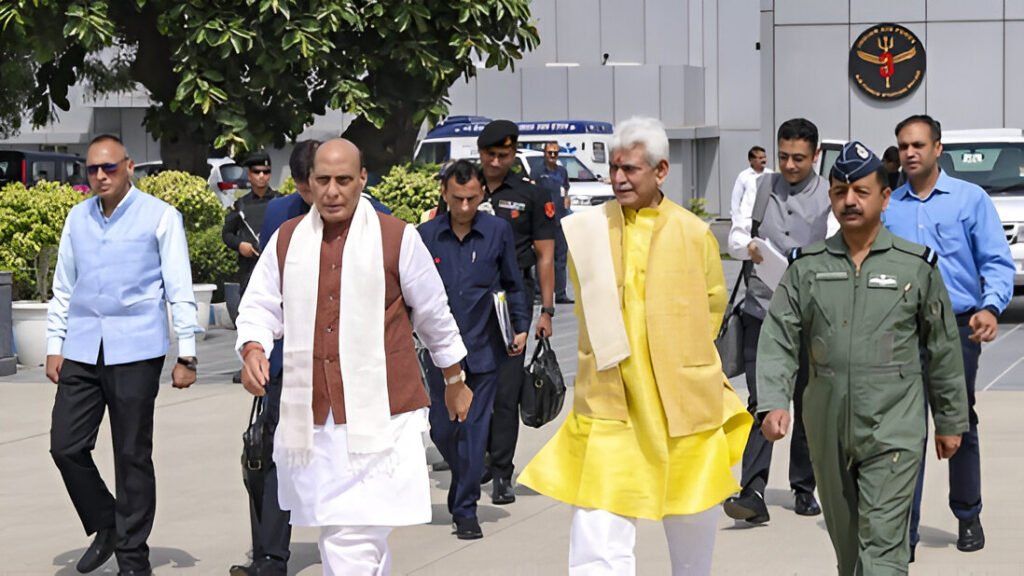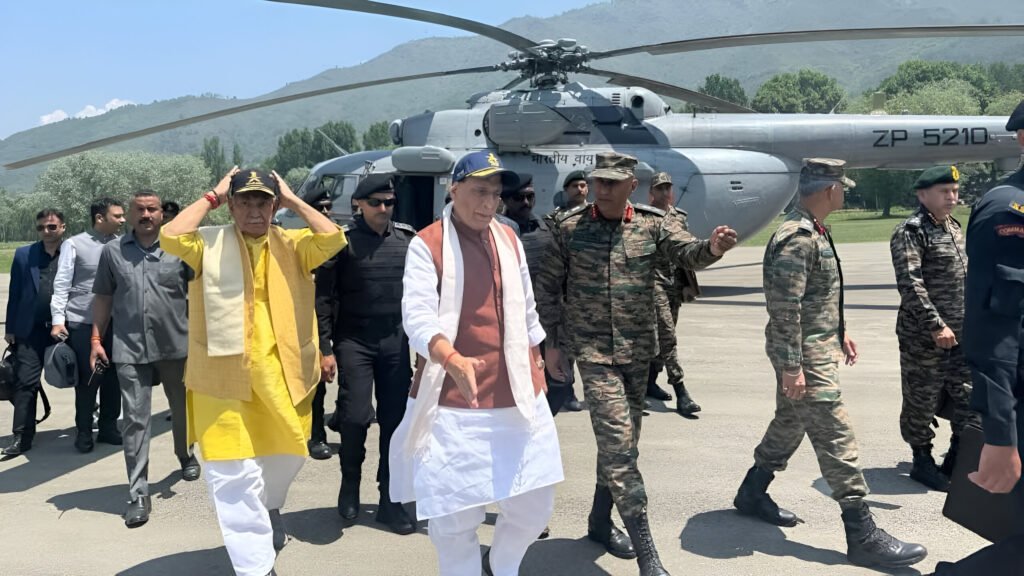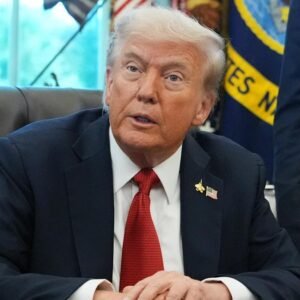
Jammu and Kashmir has experienced numerous ups and downs regarding peace and security in recent years. One such pivotal moment was quite recently when India conducted Operation Sindoor following a terrorist attack in Pahalgam. A few days following this military operation and a shaky ceasefire agreement between India and Pakistan, Defense Minister Rajnath Singh toured the area.
His visit was not only symbolic but also strategic. It reflected India’s firm stand on fighting terrorism and its commitment to national security.
What Happened in Pahalgam?
Before we understand why this visit was so important, we must look at what triggered it.
In Pahalgam, a tranquil tourist destination in Kashmir, terrorists attacked tourists and innocent civilians. The assault resulted in numerous injuries and fatalities. The country was stunned by this act. Strict action was demanded by most people all over India.
The government acted swiftly by initiating Operation Sindoor, a well-coordinated military operation that attacked terrorist camps that were suspected to be operating in Pakistan-occupied Kashmir (PoK).
What is Operation Sindoor?
Operation Sindoor was India’s robust response to terrorism. During this operation, Indian troops hit and demolished a number of terrorist camps on the other side of the Line of Control (LoC). These camps were thought to be responsible for the plot and attack at Pahalgam.
This operation had two prime objectives:
- To wipe out threats at the root before they could attack again.
- In order to send a strong message to those who are backing terrorism, India is not going to accept any attack on its soil or citizens.
- India-Pakistan Ceasefire: A Suspenseful Halt
Interestingly enough, following Operation Sindoor, there had been a surprise ceasefire between India and Pakistan. Although such ceasefires have occurred before, they tend to get violated and collapse. This particular ceasefire, though greeted with optimism by some, was greeted with skepticism by many Indians.
Most political and defense analysts opined that such pacts can only succeed when they are preceded by actual efforts to end terrorism, not just words.
Rajnath Singh’s Visit: The Timing Is Everything
Defense Minister Rajnath Singh arrived in Jammu and Kashmir only five days after Operation Sindoor and the ceasefire announcement. Its timing was no accident. It had powerful political, emotional, and strategic connotations.
He went to army camps, met locals, and paid respects to martyrs of the Pahalgam attack. He also took stock of the ground situation and listened to the security forces’ updates.

Boosting the Morale of Soldiers
Boosting the morale of Indian soldiers was one of the key aims of the visit. These courageous men and women guard our borders in very harsh weather conditions. When an august leader like the defense minister goes there in person and talks to them, it communicates a powerful message of support and gratitude.
Rajnath Singh appreciated the armed forces for their valor and commitment. He also assured them that the government supports them in any case.
Reviewing Security Readiness
Singh had several meetings with senior military and intelligence personnel during his visit. They discussed:
- The current state on the LoC.
- Terrorist activity and sleeper cells.
- How ready is India to face the next challenge?
- The need to engage locals in community-based intelligence.
Such visits are essential in order to make sure that plans are not only being formulated in Delhi offices but are influenced by realities on the ground.
A Message to the World
There was an international facet to this visit as well. When India’s defense minister tours a sensitive area following a military operation, the world gets a clear message: India will defend itself and won’t hesitate to take action if needed.
Concurrently, by not breaking the ceasefire following Operation Sindoor, India demonstrated that it wants peace but not at the expense of national security.
What Locals Feel
Local media reports indicate that most Kashmiris embraced the visit. Though they are fed up with violence, they also desire peace and progress. People desire jobs, improved education, tourism, and security, not bloodshed and terror.
The visit gave hope to many, particularly those who feel neglected or trapped in the middle of politics and conflict.
Conclusion: A Step in the Right Direction
Rajnath Singh’s Jammu and Kashmir visit is more than a political tour. It is a reminder that India stands firmly behind the fight against terrorism and in defending its citizens. It also reflects that the government has an active role in ground-level decision-making.
During times of tension, these gestures become a symbol of hope, strength, and unity. As we wish the ceasefire to hold and peace to return to the valley, we also believe that India will always be prepared to act decisively when its sovereignty is threatened.









